Doctors often have to diagnose psoriasis in children. This disease occupies one of the leading positions among pediatric dermatitis, which have a chronic form. Signs of psoriasis can appear in a child of any age. This pathology is often observed in newborns as well.
Reasons for submission
Modern medicine still can not name the exact causes that affect the appearance and development of the disease. In the course of numerous studies, experts managed to discover that heredity plays an important role in this process. The following statistics were disclosed:
- If one of the baby's parents has psoriasis, then there is a 50% chance that he will show signs of a painful condition;
- If both parents have psoriasis, then the probability increases to 70%.
The development of clinical symptoms of psoriasis in a child is usually observed as a result of exposure to the child's body of such factors:
- Psycho-emotional experiences;
- Physical overload;
- infectious diseases;
- Allergic reactions.
Any negative effect on the fragile body of the baby leads to such unpleasant consequences.
In a healthy person, there is a natural exfoliation of dead cells that have already passed their life cycle. If there is a failure in this process, then the skin particles simply start to accumulate on its surface. As a result, special plates are formed, which are able to grow in size and grow.
Symptoms
Psoriasis in children is recognized by the characteristic symptoms of this disease. First, the rash appears on the skin. Located in the folding area. After that there is swelling of the epidermal layers and their exfoliation. As a rule, in children older than 2 years, they begin to undress tightly.
If psoriasis appears on the nails, then the child will have small depressions in the nail plastic. Similar bodily lesions occur in one-third of infants who are ill with this pathology.
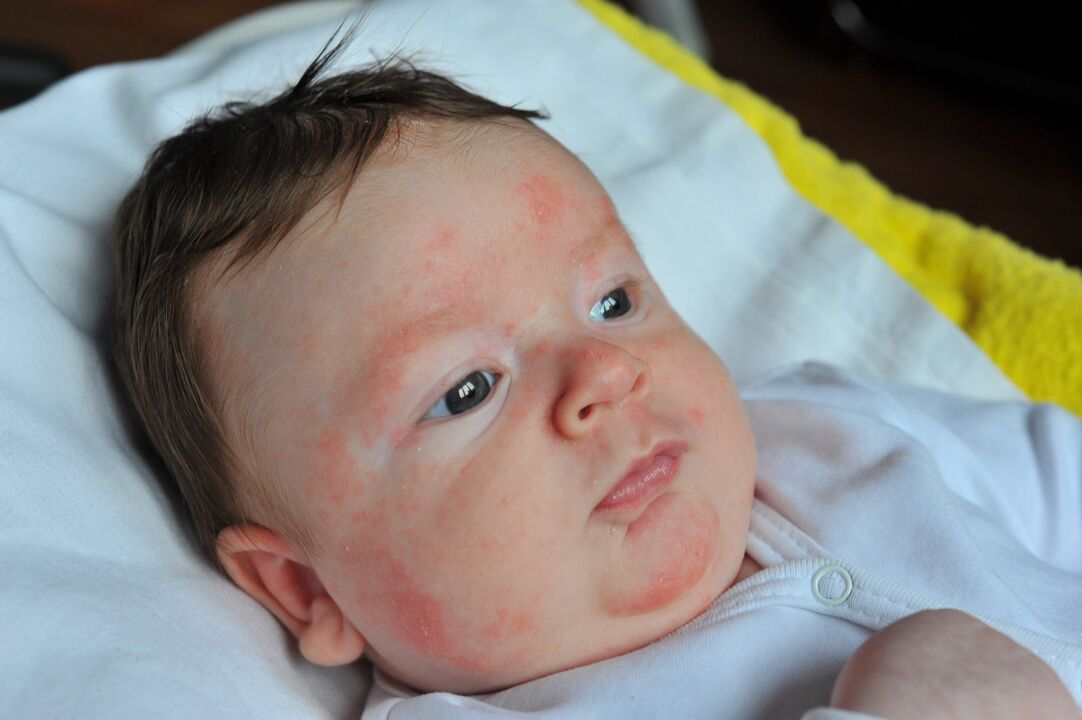
A psoriatic skin lesion, which is noticed on the scalp, causes severe redness. The plates cover the forehead, cheeks, ears and eyelids. Peeling of the skin on the hairline is not excluded. If the disease continues to progress, then gray scales will appear under the hair. However, their loss is not noticed. This painful symptom is also absent in severe psoriasis.
In some children, psoriasis is detected in the mucous membranes of the mouth and tongue. This area is covered with unpleasant spots, which occasionally change their color and shape.
Skin plaques always cause severe pain and itching. The rash can peel off and rupture, causing sores and bleeding. This is a very dangerous condition, as the infection easily penetrates into the cracks. After about 10 years, psoriasis in a child, in its symptoms, begins to appear as a sign of the disease in adults.
Stages of development
With a standard course, a skin disease always goes through several stages of its development:
Novices
It is characterized by the appearance of primary rashes on the skin. Too often, adults confuse it with a common allergy or diathesis. In children under two years of age, the initial stage is accompanied by rash. The rash is easily recognized for the fact that it looks like limited acne with a reddish tinge. Within a few days, the rash is smooth. Once gradually covered with gray scales;
progressive
At this stage there is a rapid increase in redness on the head and other parts of the baby's body. They begin to merge into one. Peeling is observed only in the central elements of the rash. The side areas, meanwhile, are just growing. The skin gradually becomes inflamed and begins to itch. At this stage, the disease usually lasts from 2 weeks to several months;
stationary
Psoriasis in children continues to progress. His symptoms become more pronounced. Old tiles stop growing. They are replaced with new blushes. Peeling intensifies. The duration of this phase is not indicated by time frames;
Regressive
The signs of peeling partially disappear in the child. Tiles become much smaller. They leave visible scars behind. With a successful result, areas begin to form with pigmentation that is different from the natural color of the skin. Over time, they disappear completely.
The duration of a particular stage of psoriasis development in young children depends on how the disease progresses and whether measures are taken to eliminate it.
kind
Psoriasis in children can be of different types. In the thematic photos you can see the features of the manifestation on the skin of each of them. The disease is classified depending on the symptoms and the location of the scales.
Film psoriasis
It is diagnosed in children who are not yet 1 year old. The rash usually affects the gluteal region. They arise due to constant skin contact with the baby's natural secretions and due to friction with the diaper. The skin in this area is very irritated, so doctors can hardly recognize psoriasis. Some parents do not even pay attention to this problem, as they get the rash for ordinary dermatitis.
Plaque psoriasis
This is a common form of skin pathology. Its characteristic features are the red spots that cover different parts of the baby's body. At first they are small in size. These points grow very fast. Once they start to undress.
From above, the rashes are covered with a layer of scales, which are easily separated from the skin. Most often they appear on the head, knees and at the bend of the elbows.
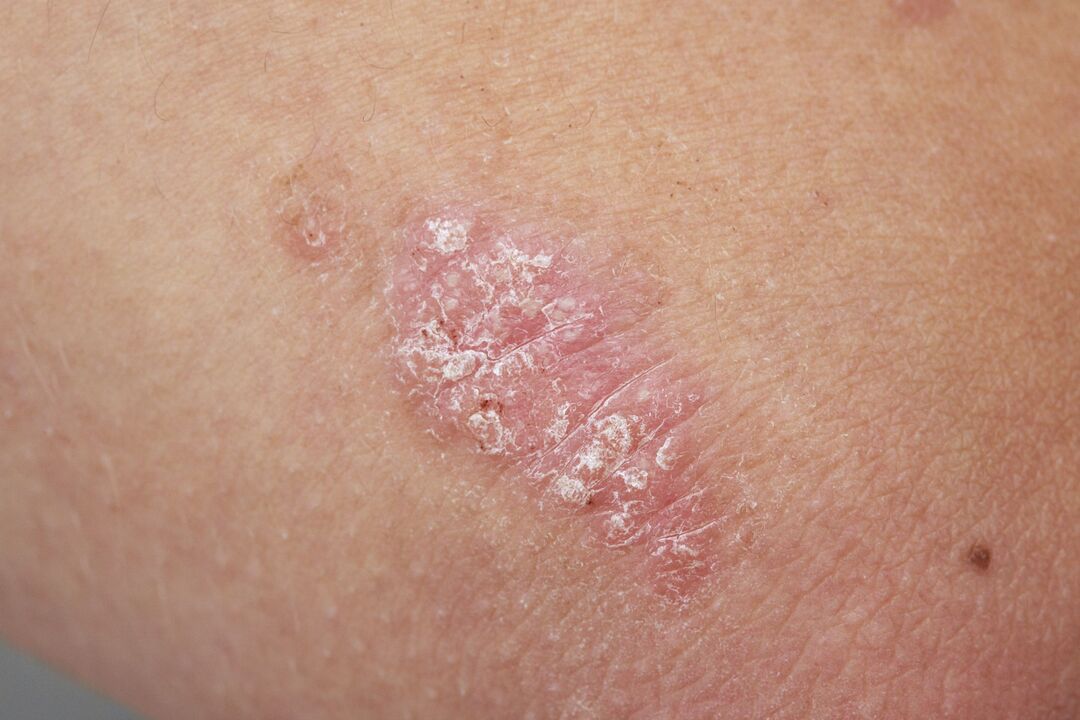
Throat psoriasis
With this form of the disease, the child's body is covered with numerous rashes, which in their shape resemble dots. They are small and have a rounded shape. The formed papules are on the surface of the skin. They are characterized by severe peeling. A rash can occur on absolutely any part of the body. In the absence of a favorable factor for its further development, psoriasis ceases to progress and disappears. In other circumstances, it develops into a different form of the disease.
Generalized pustular psoriasis
Psoriasis in children of this form appears suddenly. In a short period of time, it affects large areas of skin. They become very inflamed and covered with painful ulcers. The child is constantly tormented by pain in the area of accumulation of rashes.
This form of the disease is considered one of the most dangerous, as it can cause serious complications. This type of psoriasis can even lead to damage to internal organs. The kidneys and heart are most affected by its negative impact.
Pustular psoriasis
It is diagnosed in children who are already 7 years old. In young children, this form of psoriasis is observed only in rare cases.
There are quite pronounced signs of psoriasis in children. The pustular form of the disease is accompanied by swelling of the skin and its covering with small blisters that are filled with non-infectious fluid. Another symptom of this type of psoriasis is inflammation of the lymph nodes.
Erythrodermic psoriasis
A rather dangerous and unpredictable form of psoriasis. This leads to a violation of body thermoregulation. The disease is recognized by severe skin and skin inflammation. The child constantly suffers from itching and pain in the affected area. Large areas of the epidermis begin to shrink over time. If the child is very young, then he may not survive this condition.
Psoriasis of the flexor surfaces
From the name of the variety of the disease, it can be understood that it affects the turning areas of the body. Rash usually occurs on the groin, genitals and inner thigh. The skin is covered with red spots. They are smooth and do not peel.
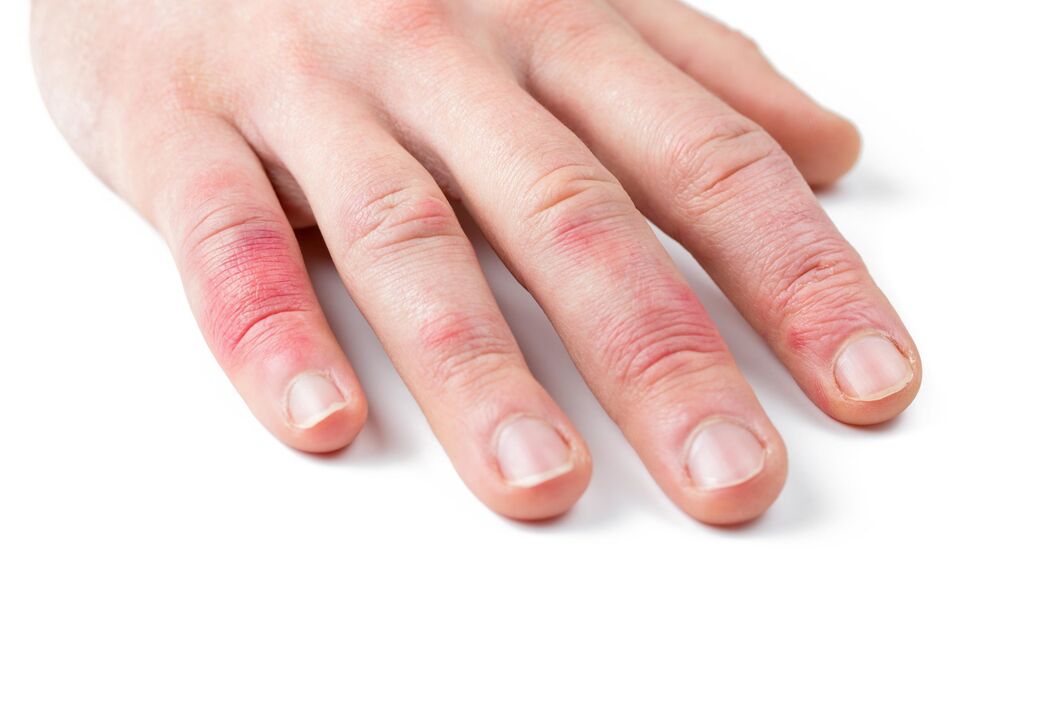
Arthropathic psoriasis
This form of the disease affects the joints. Psoriatic pathology is recognized by symptoms such as muscle stiffness, swelling and swelling of the fingers. The joints start to hurt a lot. In some cases, the child develops conjunctivitis.
Most types of psoriasis are very similar to each other in their clinical appearance. Therefore, without consulting a doctor, it is very difficult to determine from which form of the disease a child suffers.
Diagnosing
If a child has a painful rash on the head or other parts of the body, it should be reported to a specialist immediately. With such symptoms, a consultation with a dermatologist is required. He will be able to make a diagnosis after a thorough examination of the patient and listening to his complaints. The doctor will prescribe a histological examination for the baby. To do this, a small sample of the affected tissue will be taken from it. The result of the laboratory analysis will help the dermatologist to make the correct diagnosis for the child. After that, he will be prescribed treatment, which should alleviate the painful condition.
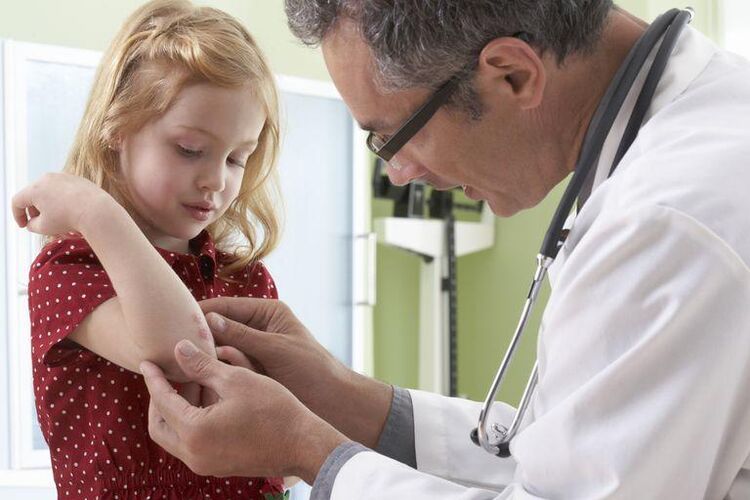
Treatment
Therapeutic therapy, the action of which aims to eliminate the signs of psoriasis in a young child, can be performed at home or in the hospital. The latter option is most optimal if the patient has a progressive stage of the disease.
It is necessary to learn how to treat psoriasis from a dermatologist who monitors the condition of the child. He or she may offer a course of therapy based on the following medications:
- Soothing and desensitizing. You will need to take a solution of calcium gluconate (5%) or a solution of calcium chloride (10%). This should be done 3 times a day. The medicine is taken in a teaspoon or a tablespoon, depending on the doctor's recommendation. Intramuscular injections based on a solution of calcium gluconate (10%) are also described. It is necessary to undergo at least 10 procedures;
- Antihistamines. They help to get rid of heavy itching. These drugs are taken in courses, each of which lasts up to 10 days;
- Vitamins. Usually ascorbic acid is prescribed to children, which should be taken 3 times a day up to 0. 1 g. A pyridoxine solution (up to 5%) is also used. They give them injections. Intramuscular intake of vitamin B12 is indicated. Inside take vitamin B15 and potassium orthoses;
- Pyrogenic. They are needed to stimulate the body's defense mechanisms. With their help, it is possible to normalize vascular permeability and eliminate the mitotic activity of the skin layers. For optimal results, about 8 courses of injections are required.
Traditional medicine offers children diagnosed with psoriasis to undergo courses of active therapy. With such a diagnosis, ultraviolet radiation and hot baths help. Also, do not neglect actual preparations. Healing ointments and creams help soothe the skin and reduce itching.
Folk remedies
Individual medications that help cure psoriatic disease may be contraindicated in children. Parents and their doctors must then choose the safest therapy for young patients, which will achieve a positive result. In such situations, traditional methods of treatment help well. You can alleviate the baby's condition in the following ways:
- Lotions from German chamomile. They should be applied to places where a large number of painful rashes accumulate;
- Salt baths. They have a healing effect and disinfect wounds formed on the skin;
- Hot tea with the addition of medicinal herbs. Such a drink is best prepared from dandelion root, burdock, grapes, sarsaparilla and pear balm;
- Activated carbon. It removes harmful substances from the body and thus stops the formation of new plaques on the head, legs, arms and other parts of the body. The drug-based solution should be taken 2 hours before meals. The course of such treatment should last at least 40 days;
- Celandine tincture. Taken orally. The tool is made from 1 glass of water and 1 tablespoon. l. chopped plant. Before drinking, the drink should be injected for about 40 minutes. Take folk medicine 2 times a day.
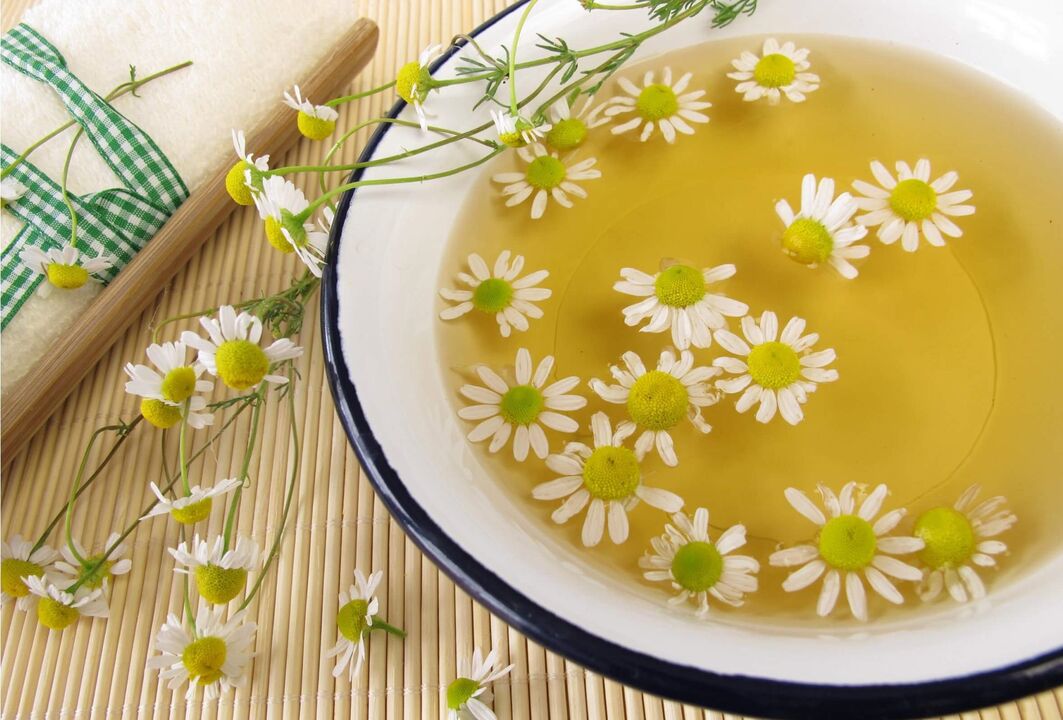
A child with psoriasis should follow a special diet. His diet should include vegetable and fruit juices, fresh herbs, fish and turkey.
It is highly recommended to abandon animal products that are rich in a large amount of fat. The patient should adhere to the optimal drinking regime. He should drink about 8 glasses a day.
prevention
A large number of people infected with psoriasis lead a completely normal life. But many are still worried about their appearance. This problem is especially troubling for children. Due to the disease, the child may fall into depression and close in on themselves. Therefore, parents should take every measure to protect their beloved child from such an unpleasant disease.
Preventing the formation of psoriatic rashes on the skin helps maintain a proper lifestyle. It is necessary to provide the child with proper rest, sleep and a balanced diet. He should avoid hypothermia and prolonged exposure to the sun. Also contraindicated is the use of soaps and lotions that dry quickly.
As a rule, psoriasis that appears in a young child is rarely severe. Therefore, depending on the timely delivery of medical care to the patient, he manages to quickly and permanently get rid of the signs of the pathological process. In order for the baby to heal, it must be fully protected from the factors that provoke the progression of the psoriatic disease.























